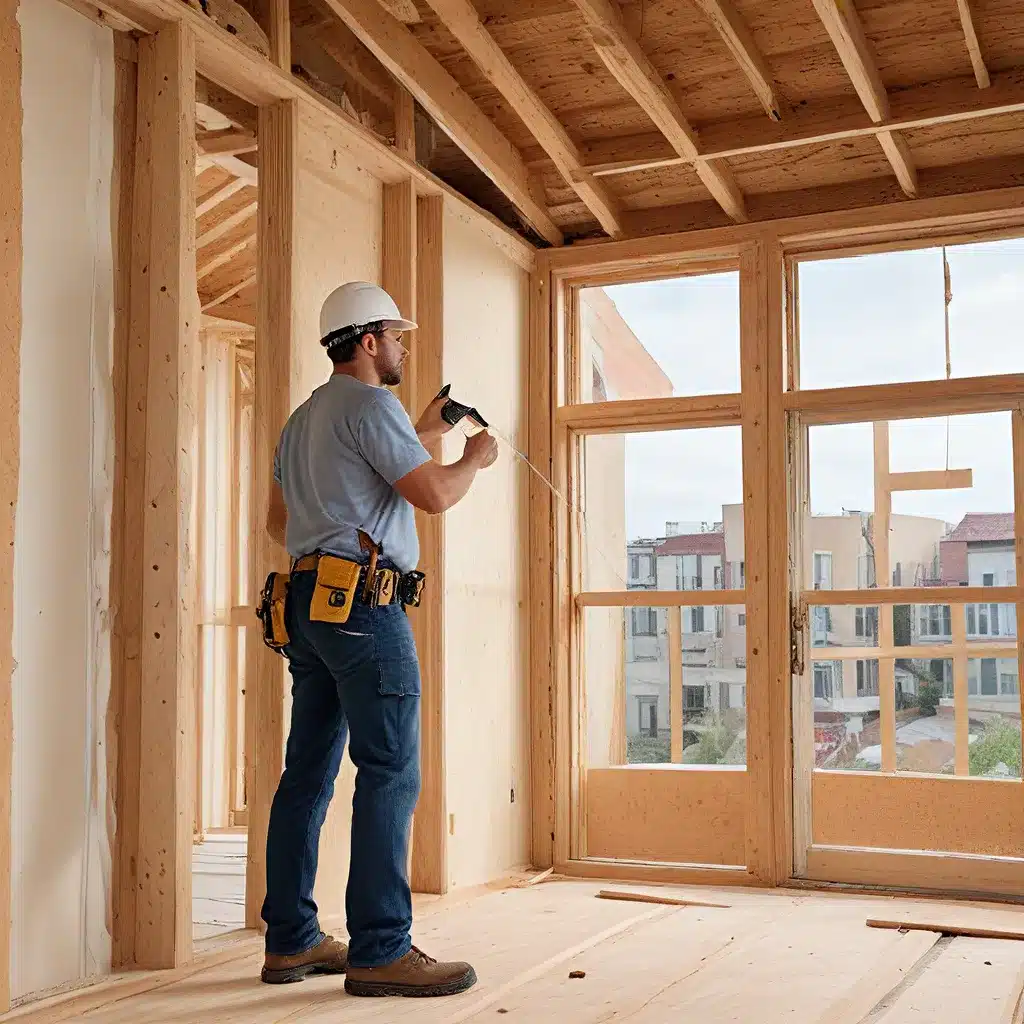
Protecting Homes, Elevating Expectations
As a general contractor, I’ve witnessed firsthand the power of Mother Nature and the havoc she can wreak on homes. From devastating floods to raging storms, the elements can be as unpredic
table as they are unforgiving. But what if I told you there’s a way to outsmart the forces of nature and keep your clients’ homes safe, come what may?
Welcome to the world of elevated foundations – the ultimate in home protection that’s changing the game for general contractors like myself. Forget about sandbags and plastic sheeting; this is the real deal, a mitigation strategy that can safeguard your clients’ most prized possessions.
Lifting Homes to New Heights
Elevation is the name of the game when it comes to protecting structures from the ravages of floods and other natural disasters. By raising a building off the ground, you can ensure that the lowest floor, as well as all the vital electrical, plumbing, and HVAC systems, are positioned high above the Design Flood Elevation.
According to the experts at Reduce Flood Risk, there are several types of elevated foundations to consider, each with its own unique advantages:
- Piers: Concrete or masonry structures that lift the building off the ground, allowing water to flow underneath.
- Posts or Columns: Vertical supports that elevate the structure, often used in areas with shallow flooding.
- Piles: Deep-driven supports that can handle deeper flood waters and stronger currents.
The choice of foundation type will depend on factors like the likelihood of flooding, the potential for debris or ice flow, and the local regulations set by your community’s floodplain management ordinance. One thing’s for sure, though – when it comes to protecting your clients’ homes, elevation is the way to go.
Navigating the Elevation Process
So, how exactly does one go about elevating a home? It’s a complex process, to be sure, but with the right expertise and a bit of elbow grease, it’s a challenge that can be met head-on.
The first step is to have a registered design professional evaluate the structure and the land it sits on. They’ll assess the feasibility of the project, determine the necessary height for elevation, and ensure the building can withstand the lifting process.
Once the green light is given, the fun (or rather, the hard work) begins. The structure is temporarily lifted off its existing foundation, propped up by supports while the old foundation is removed. Then, the new piers, posts, or piles are installed, either attached to the existing foundation or secured into new, reinforced concrete footings.
As the experts at Reduce Flood Risk explain, “Once the piers are in place, the structure is then lowered and secured with appropriate fasteners.” And voila – your client’s home is now elevated and ready to weather even the most intense storms.
But the work doesn’t end there. Annual inspections are a must to check for any signs of cracking, corrosion, or structural failure. After all, we can’t leave anything to chance when it comes to protecting our clients’ most valuable investments.
Elevating the Flood Protection Game
Now, I know what you’re thinking – this all sounds great, but what about the cost? Elevating a home is no small feat, and it can come with a hefty price tag. But trust me, when you consider the long-term benefits, it’s an investment worth making.
Think about it – a single flood event can cause thousands, if not millions, of dollars in damage. And with climate change exacerbating the frequency and intensity of natural disasters, the risk of flooding is only going to increase. By elevating a home, you’re not just protecting it from the immediate threat, but you’re also future-proofing it against the ever-changing landscape of natural disasters.
At Reading General Contractor, we’ve made elevated foundations a cornerstone of our home protection strategy. And let me tell you, our clients are elated. They know that their homes are fortified against the elements, giving them peace of mind and a sense of security that’s priceless.
But the benefits of elevation go beyond just flood protection. By raising a home, you’re creating valuable additional space underneath for things like parking, storage, or even an extra living area. Plus, the aesthetic appeal of an elevated structure can add real value to a property, making it a win-win for both you and your clients.
Embracing the Elevation Revolution
As general contractors, we have a responsibility to our clients to provide them with the best possible protection for their homes. And in today’s climate, that means embracing innovative strategies like elevated foundations.
Sure, it might require a bit more effort and investment upfront, but the long-term payoff is undeniable. By elevating homes, we’re not just safeguarding our clients’ most prized possessions; we’re also elevating the standard of what it means to be a truly exceptional general contractor.
So, are you ready to join the elevation revolution? Visit Reading General Contractor to learn more about our cutting-edge home protection solutions, and let’s work together to keep our clients’ homes high and dry, no matter what Mother Nature throws their way.
Related posts:
No related posts.




